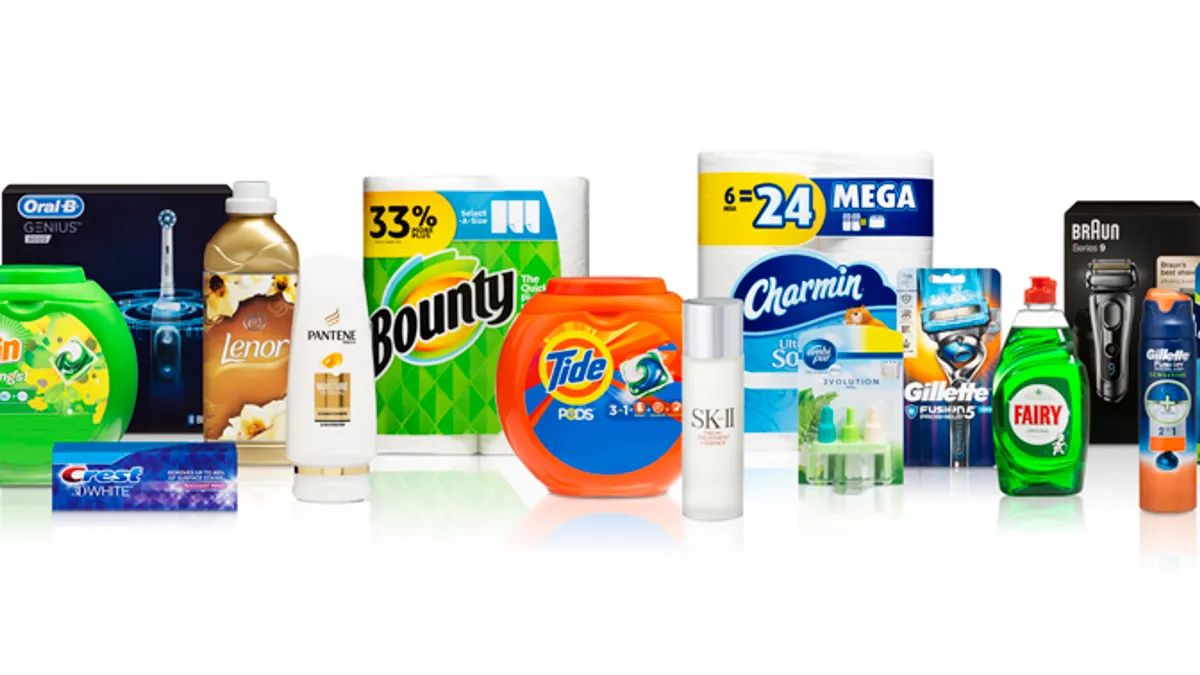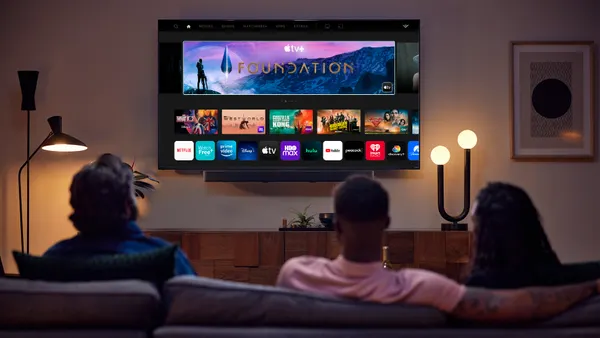Dive Brief:
- Procter & Gamble's revenue rose 9% to $19.3 billion in Q1 2021, per its most recent quarterly earnings report. E-commerce sales increased about 50% for the quarter and now represent "probably 11% to 12%" of total sales, said Co-Chairman and Chief Financial Officer Jon Moeller on an earnings call.
- The company increased marketing spending more than $100 million in the quarter, while cutting overhead, media, agency and production costs, Moeller said on a separate media briefing call cited by Ad Age.
- P&G continues to cut costs and reinvest in advertising as the company sees surging sales of its products, especially as cleaning, health and hygiene take on greater importance during the pandemic.
Dive Insight:
As it did during the early days of the pandemic, P&G continues to double down on marketing as the health crisis changes consumer behaviors in the CPG category and elsewhere. At the same time, the company is well positioned to see an enduring benefit from putting a bigger focus on online shopping and digital marketing.
For P&G, it is a time to move forward — not retreat — in ad spend, especially as consumers continue to spend most of their time at home, consume more media and keep the pandemic front-of-mind, Moeller said on the media briefing, per Ad Age.
While P&G has benefited from being the company behind name brands in cleaning, health and hygiene at a time of great consumer uncertainty and more time at home, some analysts also pegged the company's growth to its marketing approach, product innovations and internal structure changes.
"We think P&G had the foresight to recently change its structure to help prepare itself for a more digital-grocery-shopping and digital-marketing future. The pandemic has accelerated these trends faster than we, and likely many others, anticipated," John Boylan, senior equity analyst at Edward Jones, said in emailed comments to Marketing Dive.
Amid those accelerated changes in consumer behaviors faced by CPGs and other industries are the steady march of e-commerce and the rise of direct (DTC) brands. While its e-commerce business grew steadily in the quarter, P&G prefers a "channel-agnostic approach" that helps the company find success with packaging, communication and value that is right each channel, Moeller said on the earnings call. In kind, he noted that while DTC allows P&G to get closer to consumers' needs and habits, a bigger DTC presence wouldn't come at the expense of other channels.
Some consumer behavior changes evident since March could persist after the pandemic recedes, leaving P&G in a position of strength, despite future economic weakness and a potential ebb in demand.
"We think digital-shopping and marketing trends, along with the potential for people choosing to work at home, may keep demand higher than many anticipate, even after the pandemic eventually ends," Boylan said.













